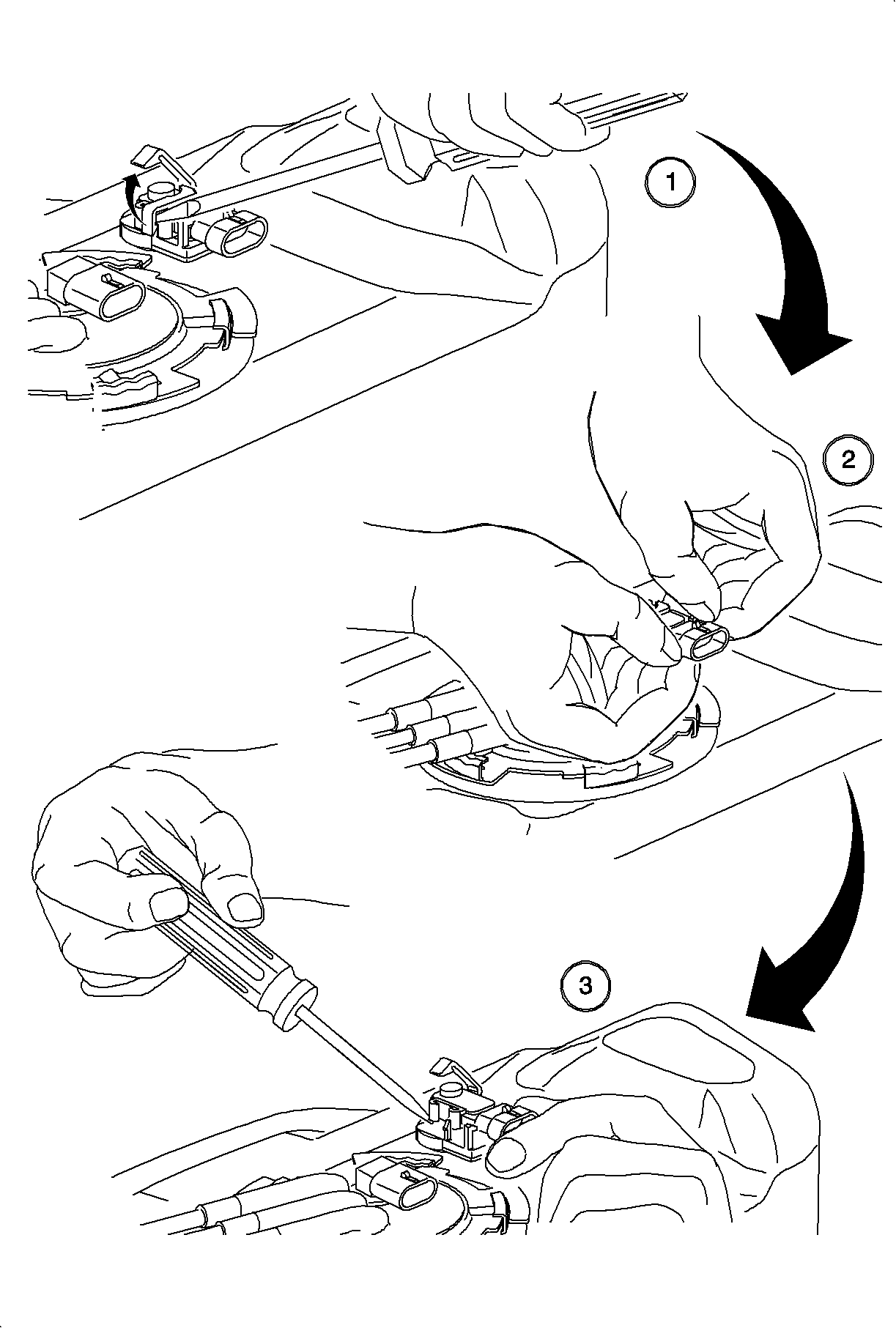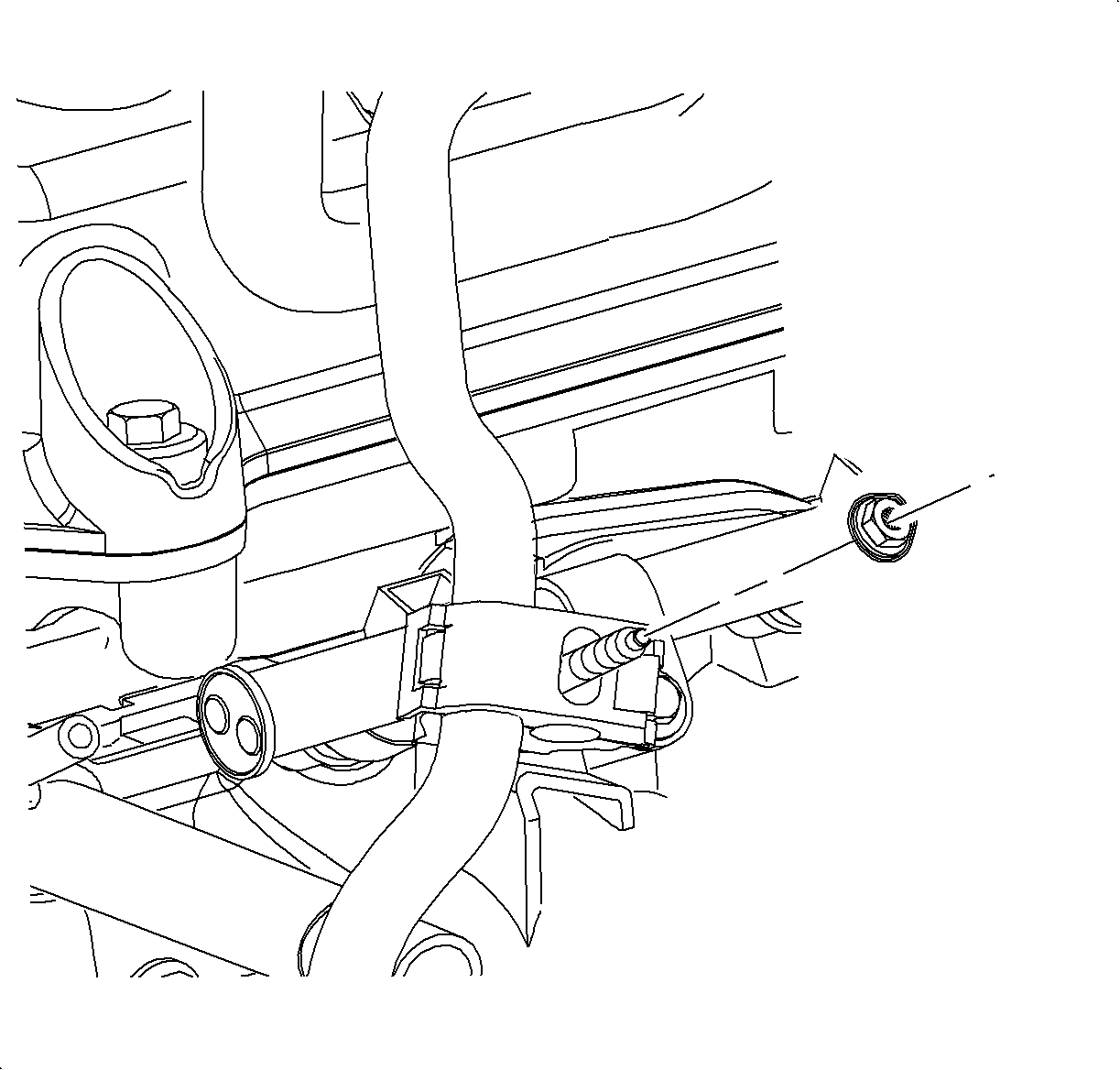The fuel feed line and the evaporative emission (EVAP) canister purge line are routed together on the underbody up to the fuel rail. The 2 lines are serviced as an assembly.
Removal Procedure
- Position the vehicle on the hoist
- Relieve the pressure in the fuel system at the fuel pressure test port. Refer to Fuel Pressure Relief .
- Remove the retaining screw, 10 mm hex, at the fuel line clip to the intake manifold brace.
- Disconnect the fuel feed line at the fuel rail and the EVAP canister purge line at the purge solenoid, both are quick connects.
- Raise the vehicle to a comfortable working height.
- Disconnect the 90 degree fuel feed line quick connect at the outlet of the fuel filter/pressure regulator.
- Disconnect the 90 degree EVAP canister purge line quick connect at the front edge of the fuel tank.
- Remove the 4 attachment screws, 10 mm hex, and remove the fuel/brake line shield on the underbody.
- Remove all 6 attachment nuts, 10 mm hex, securing the fuel/purge line bundle retainer clips to the underbody and remove the clips from the brake lines.
- Open the retainer clip at the left-hand body side rail and remove the fuel and purge line.
- Remove the fuel/purge line bundle from the vehicle.

Caution: Fuel supply lines will remain pressurized for long periods of time after the engine is shutdown. This pressure must be relieved before servicing the fuel system.

Notice: To prevent fuel from draining out of the fuel rail, install a soft plastic or vinyl cap over the fuel rail connection.
Caution: Ensure that the vehicle is properly supported and squarely positioned. To help avoid personal injury when a vehicle is on a hoist, provide additional support for the vehicle on the opposite end from which the components are being removed.
Important: The purge solenoid connection may be more accessible from under vehicle.


Installation Procedure
- Load the fuel/purge line bundle, with retaining clips attached, to the underbody from under the vehicle.
- Compare the position of the retaining clips on the lines to the attachment stud location on the underbody and adjust the position of the clips as necessary.
- Install the retaining clips to the brake lines and attachment studs with nuts, 10 mm hex.
- Install the fuel and brake line shield to the underbody with (4) attachment screws, 10 mm hex.
- Connect the fuel supply line to the filter/regulator outlet and the chassis purge line to the fuel tank purge line.
- Connect the chassis purge line to the EVAP canister purge solenoid.
- Install the forward fuel line retaining clip to the intake manifold brace with an attachment screw, 10 mm hex.
- Connect the fuel feed line to the fuel rail.
- Energize the fuel pump and check all connections for leaks.
- Perform the Service Bay Diagnostic Test for the evaporative emission system using the scan tool. This test will verify the integrity of the vapor handling areas of the fuel system. Refer to Service Stall System (SSS) user guide.

Notice: Refer to Fastener Notice in the Preface section.
Tighten
Tighten the brake line retaining clip to 2.5 N·m (22 lb in).
Tighten
Tighten the fuel line shield-to-underbody to 12 N·m (9 lb ft).
Notice: Replace plastic fuel line retainers whenever the fuel supply or return line is disconnected at the fuel rail. Install the new retainer into the female cavity of the connection. Care must be taken to ensure that the locking tab is centered in the window of the female cavity. Firmly press the female connection onto the male end until a click is heard, then pull back to confirm engagement. Pinched, kinked, or damaged fuel lines must be replaced.

Tighten
Tighten the fuel line retainer clip to 4 N·m (35 lb in).
